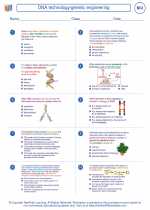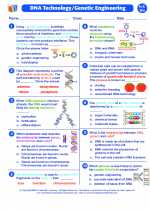Stormy Weather and its Impact on Biology
Stormy weather can have a significant impact on various biological processes and ecosystems. Here are some key points to consider when studying the effects of storms on biology:
1. Erosion and Soil Composition
During storms, heavy rainfall and strong winds can lead to erosion of soil. This can affect the composition of the soil and the availability of nutrients for plant growth. Students should study the impact of erosion on soil fertility and the resulting effects on plant communities.
2. Aquatic Ecosystems
Storms can lead to increased runoff and sedimentation in aquatic ecosystems. This can affect water quality, oxygen levels, and the survival of aquatic organisms. Students should explore the impact of storms on freshwater and marine ecosystems, including the potential for flooding and habitat destruction.
3. Adaptations in Wildlife
Many species have evolved adaptations to cope with stormy weather, such as burrowing behavior, water-resistant fur or feathers, and migration patterns. Students can research specific examples of how wildlife has adapted to survive and thrive in stormy conditions.
4. Climate Change and Extreme Weather Events
As our climate changes, there is growing concern about the frequency and intensity of stormy weather. Students should examine the potential long-term effects of increased storm activity on biodiversity, species interactions, and ecosystem resilience.
5. Human Impact
Stormy weather can also have significant impacts on human populations, including effects on agriculture, infrastructure, and public health. Students should consider the relationship between human activities and the vulnerability of ecosystems to storm-related disturbances.
Study Guide
Here are some study guide questions to help you explore the topic of stormy weather and its impact on biology:
- How does stormy weather affect soil erosion and nutrient cycling in terrestrial ecosystems?
- What are the primary ways in which stormy weather influences aquatic ecosystems and the organisms that inhabit them?
- How have specific plant and animal species adapted to survive and thrive in stormy environments?
- What are the potential consequences of increased storm activity as a result of climate change?
- What are the societal and ecological implications of stormy weather events for human populations?
By exploring these questions and delving into the various impacts of stormy weather on biology, students can gain a deeper understanding of the complex interactions between weather patterns and the natural world.
.◂Biology Worksheets and Study Guides High School. DNA technology/genetic engineering

 Worksheet/Answer key
Worksheet/Answer key
 Worksheet/Answer key
Worksheet/Answer key
 Worksheet/Answer key
Worksheet/Answer key
 Vocabulary/Answer key
Vocabulary/Answer key
 Vocabulary/Answer key
Vocabulary/Answer key
 Vocabulary/Answer key
Vocabulary/Answer key
